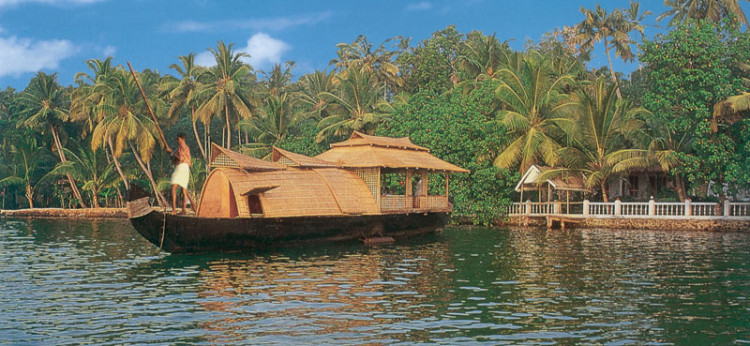Our greatest tourism resource is being wasted. Every year, hordes of tan-seeking people flock to the beaches of the world. In our country, an estimated 2.3 million, that is 23 lac, tourists head for the sun, sand and surf of Goa. But that green and friendly state holds just a fraction of our 7,500 km coastline. In spite of this, successive governments have never included Tourism as a high-value coastal activity when laying down our Coastal Regulation Zones, Sadly, the CRZ has been soiled by a long history of fuzzy thinking from its whimsical beginning right down to today.
A Hasty Patchwork
It started in the 1980s when Prime Minister Indira Gandhi decided that our beaches needed protection, so we created a legal fence: a coastal base-line. . Ideally, this should have been the High Water Mark laid down, with meticulous co-ordination, by the experts of the Hydrographic Survey of India and the Survey of India working over a 14 year cycle of Spring tides, when the sea sweeps in furthest inshore, as well as weather cycles. Storms can also push the sea high up the beach. But the PM was in a hurry. She settled for a High Tide Line based on observations of such things as the visible line of surf debris, beach vegetation and berms which are the narrow shelves left by intruding waves. All three are inaccurate signs of the HTL. The line of floating debris, technically called flotsam, can be washed further inland by a sudden storm. The line of vegetation also does not indicate the HTL because there are many plants that thrive in saline water. Berms are deceptive: they can be built by winds blowing in from the sea. Moreover, all this visible ‘evidence’ has to be recorded by observers physically trudging along the beaches of India. A diligent observer can trudge along 10 kms of beaches a day, at most. To cover our entire coastline would take at least 750 man-days. Since we do not have a specialized Corps of Beach Observers, the chances are that these critical tasks would have been assigned to the junior-most people in the local bureaucracy.
 In other words, the crucial HTL, on which a major part of Coastal Regulations depends, rests on unscientific inputs gathered by untrained people at varying times and in diverse topographical and climatic conditions. There is absolutely no uniformity about their data gathering. The HTL as used in the CRZ is little more than a myth.
In other words, the crucial HTL, on which a major part of Coastal Regulations depends, rests on unscientific inputs gathered by untrained people at varying times and in diverse topographical and climatic conditions. There is absolutely no uniformity about their data gathering. The HTL as used in the CRZ is little more than a myth.
Then there is the question of cliffs. If the purpose of these Regulations is to protect our fragile beaches from environmental degradation, then the land atop high cliffs are not be beaches. Logically, therefore, all measurements of this area supposedly endangered by human activity should start at the HTL where the sea washes the cliff. If, therefore, the regulated zone is 500 m. from the HTL, and the HTL is 20 meters up the cliff, then the CRZ should begin from that point and not from the top edge of the cliff. . This has been ignored.
Atomic Power Plants are another weak spot of the CRZ.
The CRZ treats such potentially dangerous installations with awesome sanctity. The evil radio-active fall-out of the Fukushima disaster in Japan is now believed to have spread across the Atlantic Ocean and touched the shores of distant USA. In spite of this, our government has given atomic power plants a blanket exemption from the CRZ. Why has tourism not been accorded such exemptions? We believe that the answer lies in the mind-set of the majority of our people. They feel that tourism is a frivolous activity unworthy of serious consideration. It is surprising that those who are so quick to follow the leader in all other ways have ignored the Vibrant Gujarat model. They still have a hyper-conservative mindset, at least in their public posturing. This is in line with their stated revulsion of Public Displays of Affection, Khajuraho and Konarak notwithstanding. Dancing in public is, according to these persons, a slight to our ancient cultural heritage regardless of the provocative Item Numbers on our wide-screens and the uninhibited gyrations on the streets by jubilant wedding parties. Consequently, according to these netas with medieval, patriarchal, predilections, Tourism is a trivial, Western, pursuit
Ironically, these same people gladly accept junkets abroad as the perks of their position as netas. In their view, all people are equal but netas are more equal than others!
Ghettoizing Beaches
This casteist approach has resulted in the CRZ making virtual fishing ghettos of our beaches. Traditional shore-dwelling communities can continue to live in their sea-side homes provided they don’t try to convert their area into value-enhancing tourist resorts or opt for other legitimate tourism activities. They must stick to the occupations of their ancestors. This smacks of divisive, ethnic, deprivation. Or perhaps we in the tourism industry are at fault. Perhaps we have not made enough concerted effort to convince our legislators and administrators about the positive impact of tourism on the lifestyles of our coastal people. Both Goa and Kerala are coastal states attracting large numbers of tourists. Both these states have remained green and have not only retained their culture but they have used tourism to enhance it. When we were researching our book on Goa, restaurateur Chico Fernandes told us that he and some of his friends had replicated the festivities of Rio’s Carnival, modified to suit Goan sensibilities. According to him, much of Goa’s pre-Lenten celebrations, as we know them today, were grafted onto traditional festivities specifically to attract and hold tourists. Similarly, thanks to tourism, Kerala’s iconic backwater houseboats were introduced as a tourist attraction. When we proposed the idea of backwater cruises to Kerala’s Tourism Minister, in the ‘70s, he scoffed at it. Today it is Kerala’s brand leader. Moreover, that wonderful little tourism magazine, Welcome Kerala, has done wonders in publicizing Kerala’s many folk arts, ensuring that tourist spending reaches the grassroots without the intervention of rapacious middlemen, Why, then, must coastal people be confined to traditional occupations? Why can’t they convert their beach properties into tea stalls, restaurants and hotels? In China when the incredible terracotta army was discovered under farmlands, farming was stopped. But the government gave the exclusive right to the farmers to open souvenir shops for the thousands of tourists who started flowing in. We asked some of the former farmers if they regretted the change. “Absolutely not” they said. “Farming is an uncertain subsistence profession compared with this year-round one. Our profits are higher, employment is certain. Thanks to tourism, our children no long drift to the cities”
It is apparent that, from the very beginning, the CZR were flawed. Significantly, since the first notification was issued in 1991 there have been 30 amendments including one every year in last six years. In their hurry to get something cobbled together to meet Mrs. Indira Gandhi’s deadline, the bureaucrats threw in a whole lot of clauses that sounded impressive but were inappropriate or repetitive, In fact anyone with an iota of legal knowledge can see the patchwork nature of the Regulations. Look at this bit of gobbledegook:
CRZ shall apply to the land area between HTL to 100 mts or width of the creek whichever is less on the landward side along the tidal influenced water bodies that are connected to the sea and the distance upto which development along such tidal influenced waterbodies is to be regulated shall be governed by the distance upto which the tidal effects are experienced which shall be determined based on the salinity concentration of 5 parts per thousand (ppt) measured during the driest period of the year and distance upto which the tidal effects are experienced shall be clearly identified and demarcated accordingly in the Coastal Zone Management Plans (hereinafter referred to as the CZMPs)
Explanation. For the purpose of this sub-paragraph the expression tidal influenced water bodies means the water bodies influenced by tidal effects from sea, in the bays, estuaries, rivers, creeks, backwaters, lagoons connected to the sea or creeks and the like.
The Explanation appears to be a redundant afterthought. The term tidal influenced waters has been clearly explained in the body of the sub-paragraph. Moreover, the sub-paragraph, like much of the CRZ Notification 2011, seems to have been tailor-made for litigants. We can almost hear an advocate argue,
“But, your honour , the salinity test was not taken at the driest period of the year. I have here the weather report which clearly states that the month after the salinity test was conducted was much drier!”
Or
“On the date in question, your honour, the distance to which the tidal effects are experienced had not been clearly identified and demarcated in the Coastal Zonal Management Plans, an imperative pre-requisite to attract the provisions of this sub-paragraph”
The Integrated Solution
These Regulations are obviously regressive because, instead of enhancing the development of coastal zones, they are, virtually, freezing them into static areas with their inhabitants condemned to live in a time-warp, victims of an Inspector Raj. On the specious reasoning that the regulations will preserve the fishers’ way of life it deprives them of all hope of upgrading their lifestyles and rising above the daily and dangerous drudgery of their existence. Obviously, this was not the intention of the state when these regulations were drafted but the creators of the SZR were out of synch with the realities of fishers’ aspirations. With a little bit of intelligent drafting and liberalisation of the CZR, the incomes generated on our coasts can be increased exponentially. Sloppy drafting is also evident from the fact that exceptions to the Regulations have had to be made for specific coastal areas. It is obvious that successive governments have failed miserably to create a uniform CZR to fit all the disparate regions of our sub-continental land. We need to accept the varied requirements of our diversity as the UN Environmental Programme has done for the European coastline. It states that
European coastlines are characterized by a great variety of geomorphic features, climate conditions, biologic and socio-economic pressures, creating wide types of biotypes that simultaneously provide a variety of ecosystem services.
To handle these diverse problems they created their Integrated Coastal Zonal Management (ICZM) by the Informed participation and co-operation of all stakeholders to assess the societal goals in a given coastal area and to take action to meet these objectives.
This was done to balance environmental, economic, social cultural and recreational objectives within the limits set by national laws
 In other words, the European ICZM was created by repeated consultation and after arriving at a consensus of views of all the independent countries involved. It was not a top-down Regulation thrust on them by an all-wise European Union!, This is what we must strive for among all our coastal states. We must give this critical piece of legislation all the wide-spectrum diversity that it deserves. It would be dangerous to delude ourselves into believing that we can create an acceptable CZR on the ‘one size fits all’ principle. If Europe with 196 million coastal people tailored its ICZM to cater to social-cultural diversity it would be very dangerous for us to ignore the diversity of our 316 million coastal citizens.
In other words, the European ICZM was created by repeated consultation and after arriving at a consensus of views of all the independent countries involved. It was not a top-down Regulation thrust on them by an all-wise European Union!, This is what we must strive for among all our coastal states. We must give this critical piece of legislation all the wide-spectrum diversity that it deserves. It would be dangerous to delude ourselves into believing that we can create an acceptable CZR on the ‘one size fits all’ principle. If Europe with 196 million coastal people tailored its ICZM to cater to social-cultural diversity it would be very dangerous for us to ignore the diversity of our 316 million coastal citizens.
We understand that the government is working on a draft Act to be circulated to the public before being tweaked and laid before Parliament. We repeat this is a draft Act not another set of Regulations. Before this draft is circulated, the Tourism Industry should get together and send its proposals to the government. This would be a more gracious way of handling this matter than waiting to criticize the draft after it has been circulated.
Finally, the ideal organization to hold such an opinion-collecting seminar is FAITH. The Industry should welcome this and hope that, with the exercise of a little charity and understanding on the government’s part, we will stop wasting the great natural resource of our beaches.
By Hugh & Colleen Gantzer




































